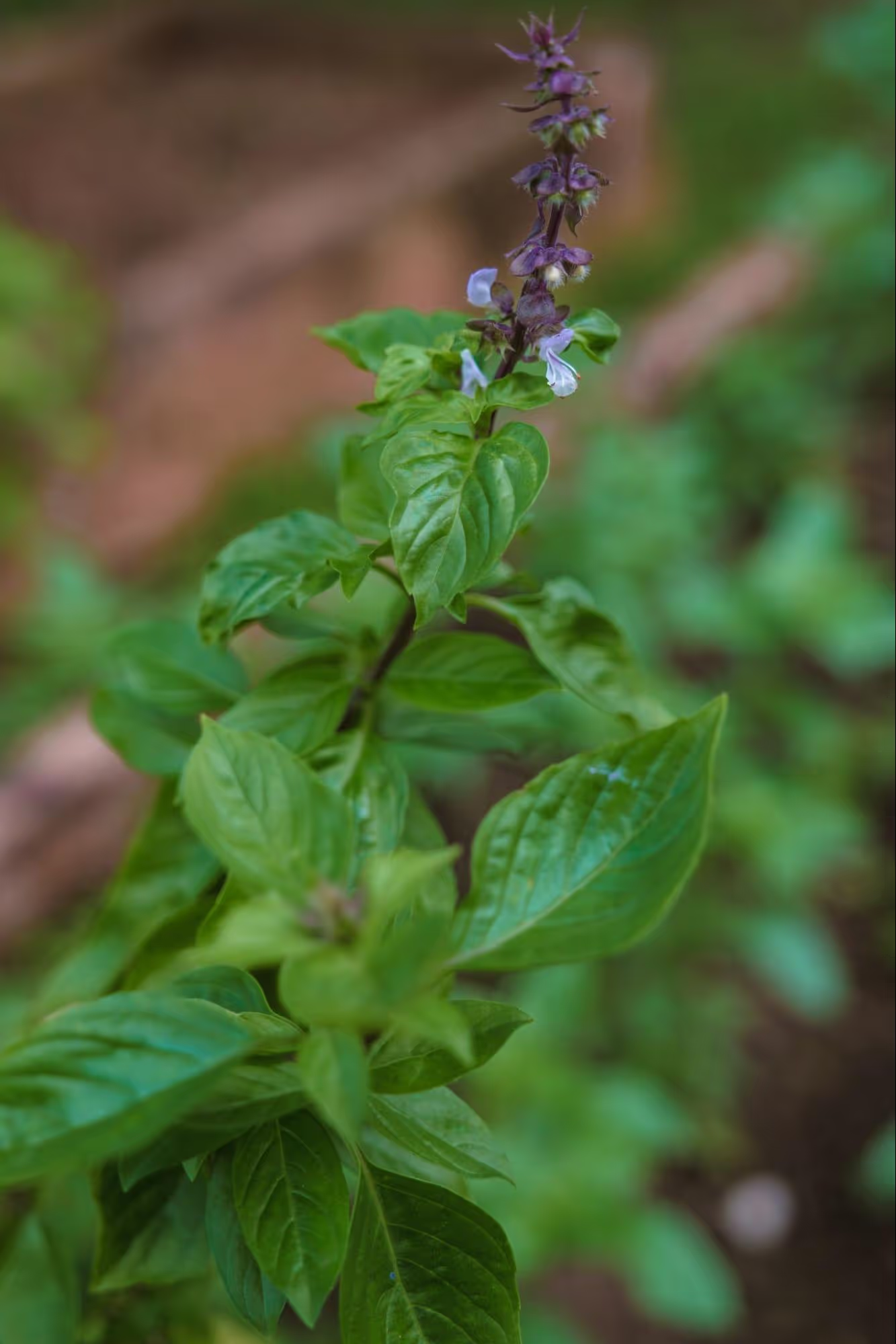
Flowering basil is a natural and unavoidable part of its life cycle. As a plant valued for its fragrant and aromatic leaves, basil attracts attention in the culinary world, especially during growth stages when it is still used in cooking. However, as the plant matures, it undergoes a flowering process that can significantly affect its appearance and flavor. Although many prefer to avoid flowering to preserve the highest quality leaves, it is an essential part of every plant's cycle.
Thai basil typically begins to flower during the summer months, after the plant has grown for 2-3 months. Once the plant reaches sufficient size and strength, it naturally enters the flowering phase. Thai basil flowers are usually purple, and the scent of the flowers tends to be milder compared to the aroma of the leaves. It is important to note that the intensity of flowering can vary depending on growth conditions such as temperature, light, and the specific variety of Thai basil being grown. Flowers typically appear as small clusters that emerge from the plant’s stem, and if the plant is left to continue flowering, these clusters may lead to a reduction in the production of new leaves. After flowering, the size and quality of the leaves may decrease as the plant redirects its energy towards seed production.
Although Thai basil can remain edible and healthy after it flowers, changes that occur in the plant may affect the flavor. The flowering phase coincides with the plant entering its reproductive cycle, which can alter its chemical composition and result in a reduction in the aroma of the leaves. During this time, some people notice that the leaves become bitter, while others find their flavor to be weaker compared to before flowering. If the plant is not pruned and continues flowering, it may stop producing new leaves, thus losing part of its culinary value.
To extend the period during which the plant produces juicy and aromatic leaves, pruning the flowers as soon as they appear is recommended. This can be done by cutting the stems that bear the flower clusters, preventing the plant from redirecting its energy towards flowering and seed production. This pruning process helps the plant continue to produce fresh new leaves that retain their intense flavor. Pruning flowers is not only beneficial for preserving flavor but also for the plant's health. Regularly removing flowers allows the plant to grow wider and taller, contributing to its strength and enabling it to produce a larger number of leaves for future use.
Flowering Thai basil is a natural process that marks a stage of growth and reproduction, but it can affect the quality and flavor of its leaves. Although the plant remains edible after it flowers, its leaves may lose their aromatic qualities and become less juicy. To preserve the full value and flavor of Thai basil, it is recommended to prune the flowers as soon as they appear. This process not only helps preserve its intense flavor but also contributes to the plant's health, allowing it to continue producing new leaves. Through proper pruning, Thai basil can provide freshness and rich flavor for an extended period, making it an indispensable ingredient in the kitchen.